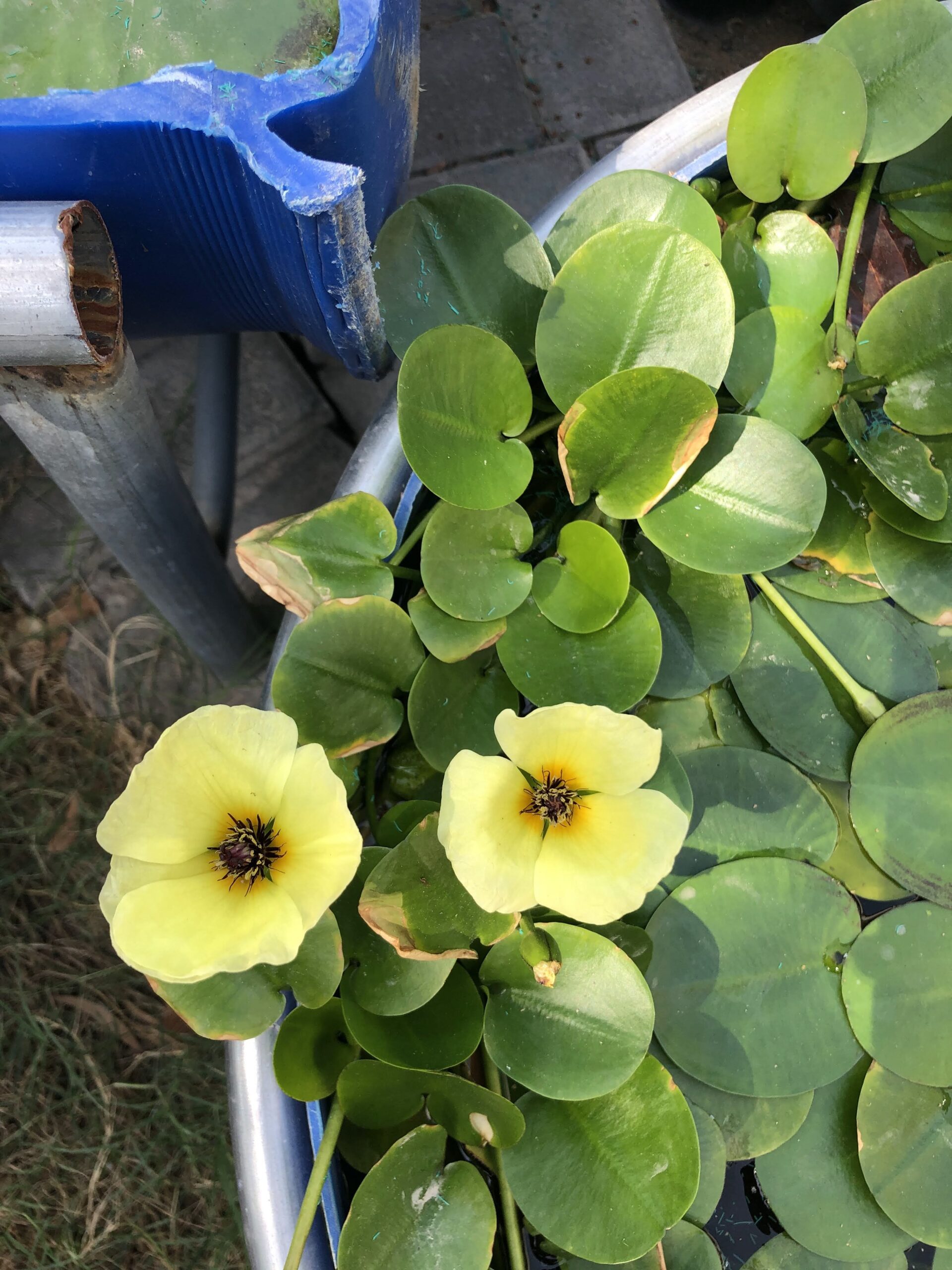Water Poppies are another gorgeous addition to your water garden or pond. I had ordered them sometime in April and though they flourished and grew green they never flowered. They have just started flowering and the yellow flowers are absolutely lovely. I planted them as I do water lilies and they spread quite fast. So I would advise you to use a slightly larger container for them.
Some water poppy facts and information from www.pondinformer.com are as follows. The botanical name of water poppies is Hydrocleys Nymphoides and they are related to some species of water lilies. The bees love them and they are a wonderful addition to your garden to help our hard-working but endangered friends. The bees also use them to cool themselves and rest as well as food. Delicate tri-petal yellow flowers with a purple center make water poppies easily identifiable. Their shiny, floating leaves are approximately 5 to 10cm (2-4″), and flowers have a diameter of around 5cm (2″). Water poppies have stolons—often called runners, which are stems that grow just below the surface and either break off or extend outward to establish new colonies. They were originally found in South America but were later introduced to the Americas, Australia, and New Zealand. Water poppies can grow up to 30cm (12″) tall, but much of their size comes from the horizontal spread, therefore we do need a largish container to ensure abundant blooms.
Water poppies flower in the Gulf between October to December and then from February to May. Though each flower only lasts one day, an abundance of flowers per cluster ensures their beauty continues all through the season. The water temperature needs to be between 21 degrees centigrade to about 35 degrees centigrade for the plants to bloom so the months of January and the peak summer in the Gulf do not see many blooms. The Water Poppy needs to be cleared of debris regularly and thinned out if you don’t want to keep changing the container. The flowers last only a day but normally come in clusters so we see blooms almost every day. Please make sure you fertilize them regularly as they need rich fertile soil so I would recommend twice a month fertilizer during the season. Although fish do not eat them they serve the purpose of shelter and quiet for different types of aquatic life. Enjoy your water poppies!







Recent Comments